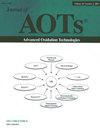无机非均相分子印迹催化剂选择性类芬顿催化氧化酸性橙II
Q Chemistry
引用次数: 2
摘要
摘要为了实现类fenton反应的选择性氧化,以酸性橙II为模板,采用溶胶-凝胶法制备了无机分子印迹Fe/Al/SiO2复合材料(IMIPF)。作为比较,没有分子印迹的Fe/Al/SiO2复合材料被称为INIPF。以十二烷基苯磺酸钠为共存干扰,研究了其吸附性能和类fenton催化选择性。在单体系和双体系中的吸附结果证明,IMIPF对目标污染物具有特殊的分子识别能力和优先吸附能力。此外,IMIPF和INIPF在单一体系中对酸性橙II的降解均表现出较高的催化活性。得益于其优先吸附和类芬顿活性,IMIPF可以在二元体系中高浓度存在其他污染物的情况下,实现对低浓度目标污染物的选择性去除。此外,IMIPF具有广泛的适用pH范围和良好的可重复使用性。本文章由计算机程序翻译,如有差异,请以英文原文为准。
Selective Fenton-like catalytic oxidation of acid orange II on inorganic heterogeneous molecular imprinted catalysts
Abstract In order to realize the selective oxidation of Fenton-like reaction, an inorganic molecularly imprinted Fe/Al/SiO2 composite (IMIPF) was synthesized by sol-gel method using acid orange II as template. As a comparison, the Fe/Al/SiO2 composite without molecular imprinting was referred to as INIPF. The adsorption performance and Fenton-like catalytic selectivity were also studied with sodium dodecyl benzene sulfonate as the coexistence interference. Adsorption results in single systems and binary systems proved that IMIPF owned special molecular recognition and priority adsorption ability of the target pollutant. In addition, both IMIPF and INIPF exhibited high catalytic activity toward the degradation of acid orange II in single systems. Benefited from the preferential adsorption and Fenton-like activity, IMIPF could achieve the goal of selective removal of target pollutants at low concentration in the presence of other pollutants at high concentration in binary systems. Moreover, IMIPF possessed a wide applicable pH range and good reusability.
求助全文
通过发布文献求助,成功后即可免费获取论文全文。
去求助
来源期刊
CiteScore
0.88
自引率
0.00%
发文量
0
审稿时长
1 months
期刊介绍:
The Journal of advanced oxidation technologies (AOTs) has been providing an international forum that accepts papers describing basic research and practical applications of these technologies. The Journal has been publishing articles in the form of critical reviews and research papers focused on the science and engineering of AOTs for water, air and soil treatment. Due to the enormous progress in the applications of various chemical and bio-oxidation and reduction processes, the scope of the Journal is now expanded to include submission in these areas so that high quality submission from industry would also be considered for publication. Specifically, the Journal is soliciting submission in the following areas (alphabetical order): -Advanced Oxidation Nanotechnologies -Bio-Oxidation and Reduction Processes -Catalytic Oxidation -Chemical Oxidation and Reduction Processes -Electrochemical Oxidation -Electrohydraulic Discharge, Cavitation & Sonolysis -Electron Beam & Gamma Irradiation -New Photocatalytic Materials and processes -Non-Thermal Plasma -Ozone-based AOTs -Photochemical Degradation Processes -Sub- and Supercritical Water Oxidation -TiO2 Photocatalytic Redox Processes -UV- and Solar Light-based AOTs -Water-Energy (and Food) Nexus of AOTs

 求助内容:
求助内容: 应助结果提醒方式:
应助结果提醒方式:


